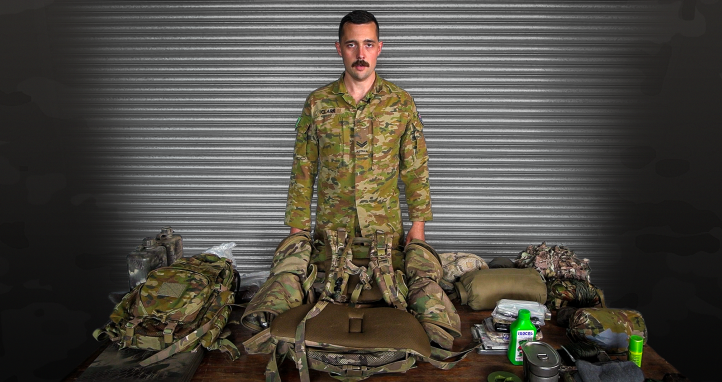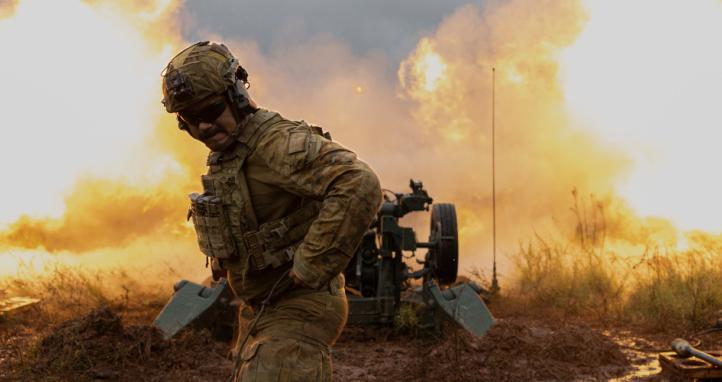The Australian Army has a number of individual and collective learning mechanisms that enable its personnel to develop Professional Mastery. The recent reinvigoration of Professional Military Education (PME) has brought to the forefront the importance of professional thinking and analysis as one such mechanism. PME brings to mind doctrine, seminars, reading and writing as part of individual and unit responsibility to develop intellectual and moral capacity. Well-established programs exist to develop physical fitness, the third component of progressing professional mastery.[i]
Let's consider Adventurous Training (AT) within this learning construct. The learning outcomes and benefits of AT for Defence are well researched and documented, most recently by Jeremy Barraclough via Grounded Curiosity, but complemented by an extensive document library accessible on the Adventurous Training Wing (ATW) intranet website. The Vice Chief of the Defence Force (VCDF) is the sponsor for Defence AT [ii], with underpinning Service policy guiding the conduct of AT activities. ATW trains and qualifies unit adventurous training leaders in a range of AT disciplines and is firmly positioning itself as ‘the ADF centre of excellence for … adult learning in a reality based experiential environment’ (Barraclough 2016).
As a physical activity, the nature of AT lends itself to be considered part of the physical component of developing professional mastery. However, stated aims of AT are to build leadership and/or resilience to enhance Defence's operational performance through developing individual and team skills such as teamwork, trust, physical and mental fortitude, initiative, resourcefulness, self-discipline, risk management and stress management.
Since one of the focuses of PME is to enhance ‘individual leadership skills, innovation and resilience,’ can a solid argument be made that AT is PME? And resultantly, achieve the inclusion of AT in directed individual and unit PME programs and Brigade-level PME? Or will AT retain its reputation as an individual or clique pursuit followed by a BBQ on a beach?
AT as Fighting Power
The Army derives its fighting power from its three learning outcomes: physical, intellectual and moral/character. AT achieves all three of these outcomes in an environment with risk mitigated to a safe level. The physical outcomes of AT are clear when looking at the disciplines of ski and alpine survival, canyoning, caving, climbing, sea kayaking and white water rafting. Intellectually, the planning and conduct of AT builds lateral thinking, situational analysis, forward thinking and mental endurance in an environment of consequence that most closely mirrors operational environments.[iii]
Most importantly, conducting AT offers military personnel a unique and often overlooked opportunity to gain self-awareness. This includes developing an appreciation of how thoughts and emotions convert into physical and behavioural reactions, which in-turn builds an individual’s ability to respond to ‘circumstance and environments of risk, challenge, fear, danger and uncertainty.’ (Barraclough 2016) This outcome of AT complements and strengthens extant training approaches where repetition drills into individuals an instinctive response based on SOPs and tactics, techniques and procedures. It is this component of fighting power that ‘ultimately underpins a soldier’s drive, motivation, view of self and responsibility to others' (Dan Cassidy 2017).
AT does incur some assumed messaging, such as being risky and an individual pursuit that does not contribute to organisational or team outcomes. Knowledge can mitigate risk, through building an understanding of possible AT activities and their respective locations. This means employing subject matter experts or experienced Unit Adventure Training Leaders (UATL) to provide input into developing a robust AT program and conducting location reconnaissance. In the case of AT, knowledge is power because it ensures safety but in a manner that may not be observable to participants in order to maximise training outcomes.
It has been demonstrated above that all stages of AT, through planning to conduct, can contribute to operational preparedness. The perspective that AT is for personal gain over organisational or team outcomes arises because passionate and enthusiastic individuals drive these activities. Some workplaces may not be conducive to conducting such activities or supporting proposals that are more adventurous. This deduction derives from an observed absence of an approval process for the conduct of adventurous activities above or outside CO remit. Resultantly, groups of likeminded people conduct activities without formal approval but with altruistic motives that with wider coverage can enhance Defence’s reputation through public relations opportunities.
With some benefits of AT articulated, consideration turns to how to incorporate AT into directed PME requirements. The unclassified Officer and SNCO PME program and Commander 3rd Brigade Directive 006/16 – Professional Education and Development, both available through The Cove, will be used to present this component of the argument.
Officer and SNCO PME Program
This program focuses on Officers, with SNCOs invited to participate. An opportunity for intellectual and capability growth could be conducting an AT activity that includes both planning and execution phases. Reviewing post activity reports and lessons learned from previous activities, structuring an argument to conduct and finance the activity, and implementing command, leadership and management requirements would develop professional thinking and analysis during the planning phase. The execution phase will achieve leadership outcomes for the UATL(s) that oversee the activity, with participants achieving the physical and moral/character outcomes mentioned above.
Commander 3rd Brigade Directive 006/16 – Professional Education and Development
'Combined arms and joint warfighting are the foundations of all 3rd Brigade professional education and development.’ Key to achieving these foundations are building esprit de corps within and amongst units, supporting units and flanking formations, which AT can achieve. It brings together people in a non-competitive environment whilst instilling a wide range of character traits including adaptation, humility, perseverance, endurance, problem solving, and composure that are valuable in combined-arms and joint warfighting environments. At a minimum, Brigade-level AT can build relationships and enables the sharing of knowledge and experience that achieves understanding of respective Unit and Service capabilities.
This quick overview argues that AT is an effective method to build operational preparedness because it enables participants to learn, share and apply knowledge, and develop characteristics to adapt in changing environments. Further examination of AT as a Defence learning mechanism would be beneficial in order to develop a stronger evidence-base of how it achieves physical, intellectual and moral learning outcomes for Army. In-turn, this knowledge can be used to strengthen the argument for the incorporation of AT into directed PME programs because of the comprehensive learning outcomes it achieves.





It is not the critic who counts, not the man who points out how the strong man stumbles, or where the doer of deeds could have done them better. The credit belongs to the man who is actually in the arena; whose face is marred by sweat, dust and blood; who strives valiantly; who errs and comes short again and again; who knows the great enthusiasms, the great devotions and spends himself in a worth cause; who at best knows in the end of the triumph of high achievement; and at worst, if he fails, at least while doing greatly; so that his place shall never be with those cold and timid souls who know neither victory nor defeat.
Lead by example, get into the arena, get dirty so regardless of rank or position you can lead our men and women through the challenge, chaos, uncertainty, danger and fear of combat that is simulated in the real environments of professionally delivered AT.
Great article Emily, let' get more ADF leaders communicating about how we can learn, adapt and win!